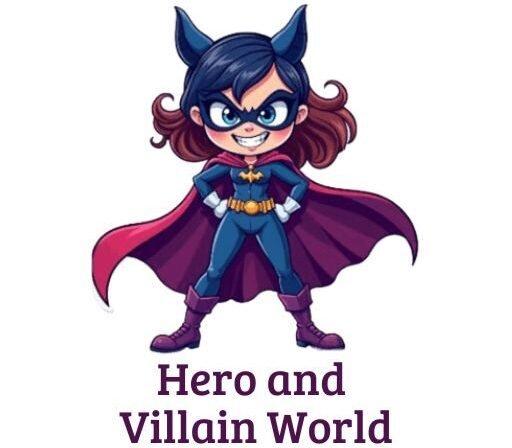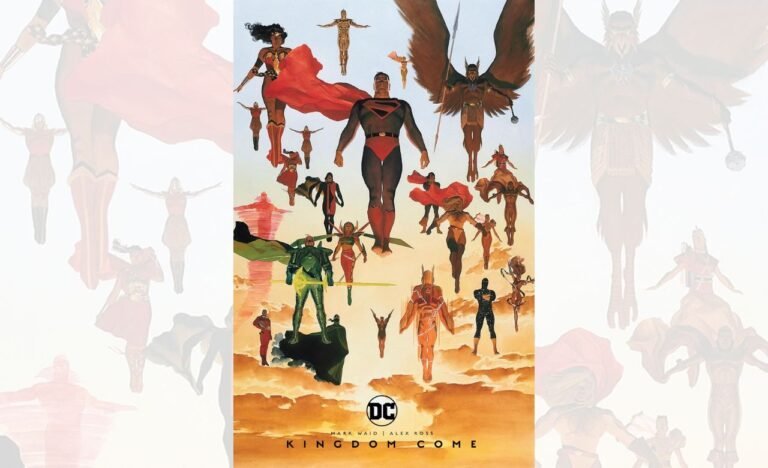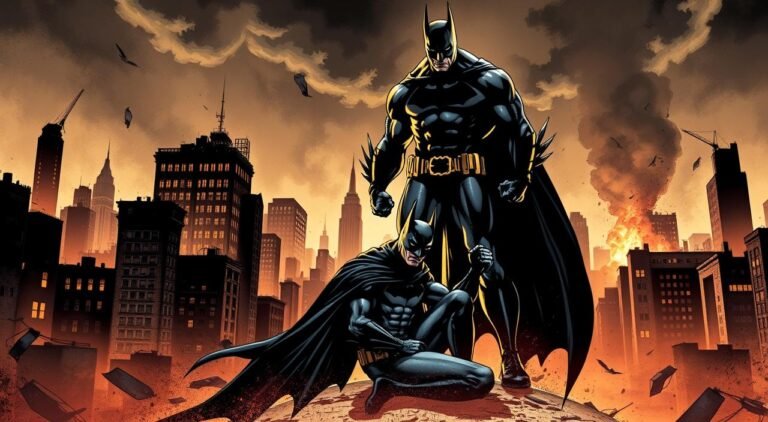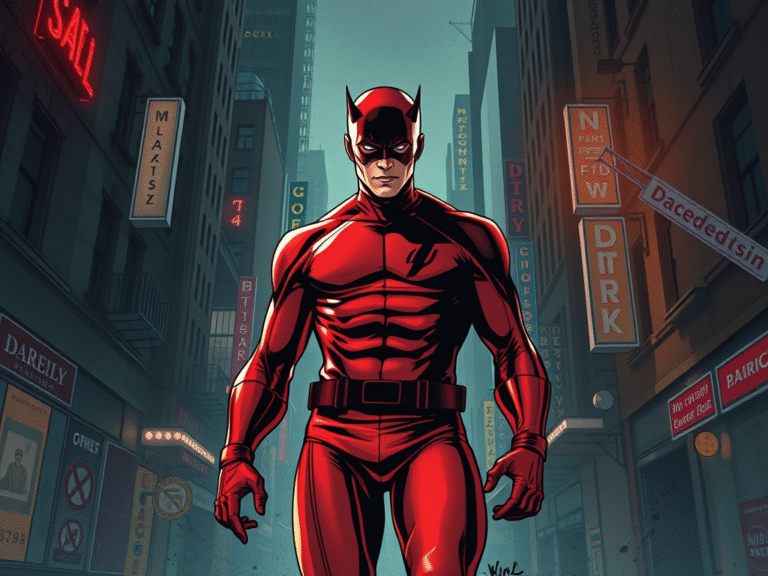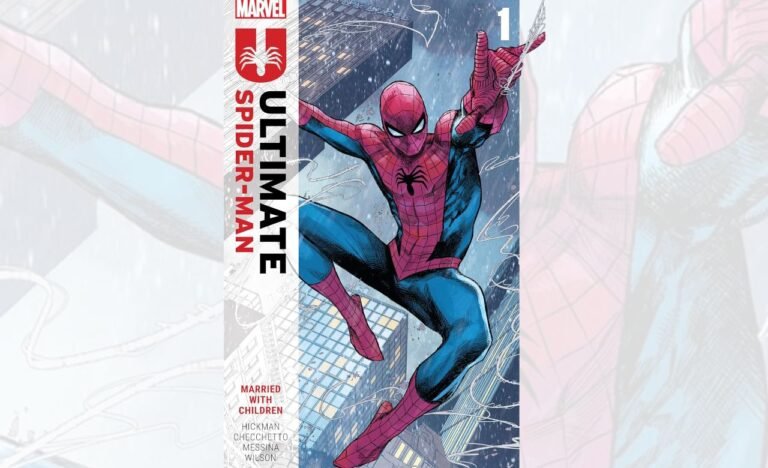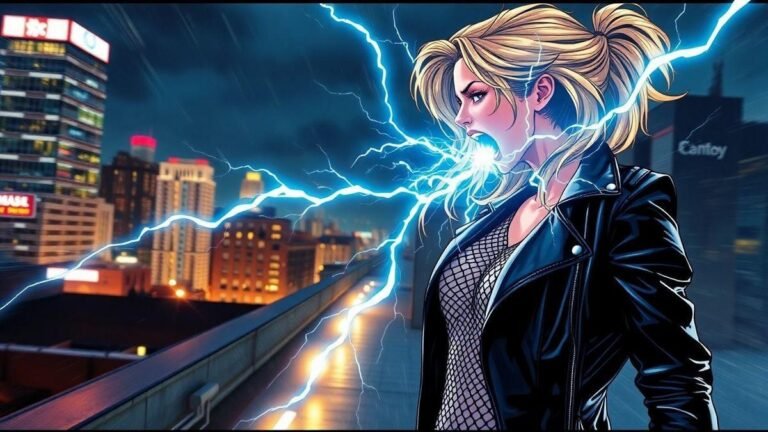Fight Choreography Comic Panels Analyzed
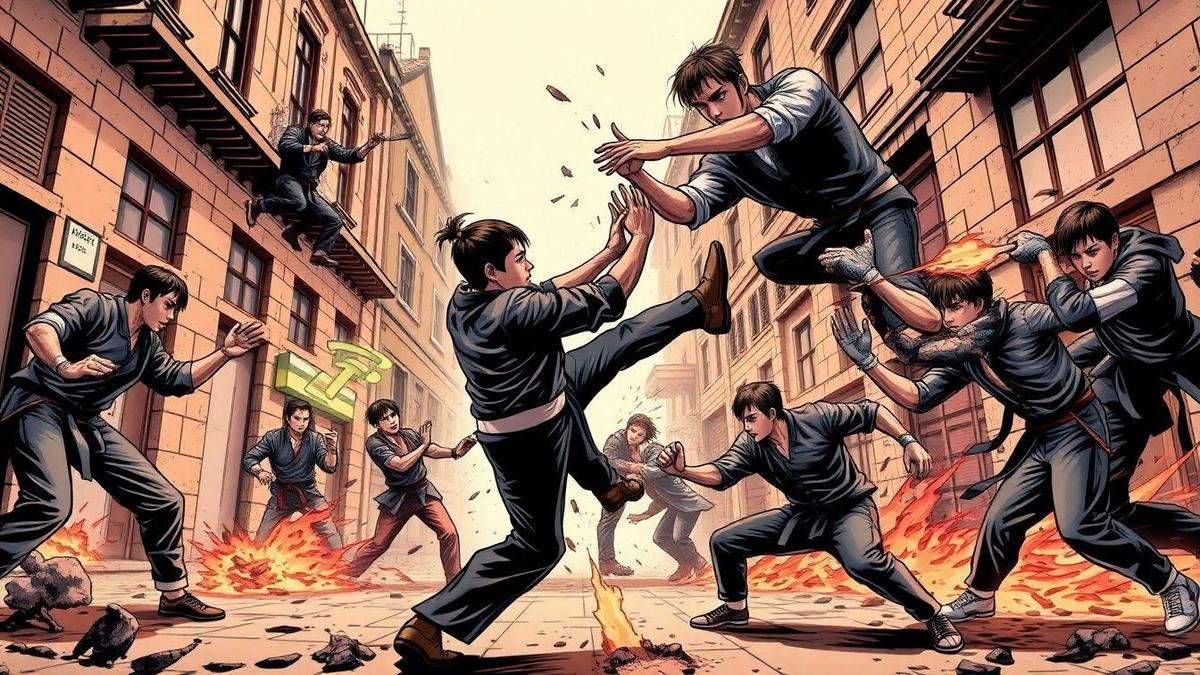
In this article, fight choreography in comic panels analyzed will take you on an exciting journey through the art of action in comics. You’ll discover what fight choreography is and why it’s so important for bringing stories to life.
Get ready to learn how panel layout and size can change the way we feel during fight scenes. We’ll also dive into how color, shadows, and expressions add drama to each punch and kick. By the end, you’ll understand the key elements that make each action sequence pop! Let’s jump right in!
Key Takeaway
- Fight choreography shows action and emotion.
- Comic panels help you see movement clearly.
- Different angles add excitement to fights.
- Colors can express the mood of the scene.
- Timing in panels helps build tension.
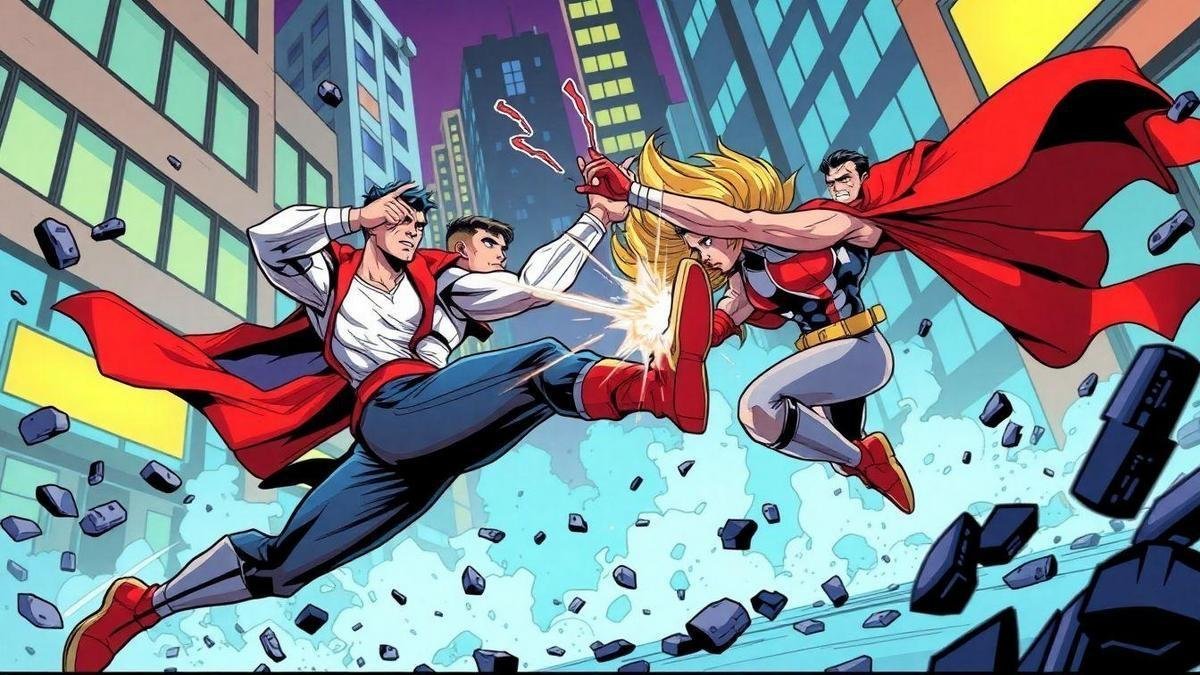
Understanding Fight Choreography in Comic Panels
What is Fight Choreography?
Fight choreography is all about planning and designing the action in comic panels. Think of it as a dance where characters move, clash, and express emotions through their battles. Each punch, kick, and dodge is carefully crafted to tell a story. It’s not just about the fighting; it’s about how those fights connect to the characters and the plot.
The Importance of Fight Choreography in Comics
Fight choreography plays a crucial role in comics. Here’s why it matters:
- Visual Appeal: Well-done fight scenes grab your attention and make the comic exciting and dynamic.
- Character Development: How a character fights can show their personality. A hero might be bold and aggressive, while a villain could be sneaky and strategic.
- Pacing: Good choreography keeps the story moving, ramping up tension or providing a breather after a big moment.
| Aspect | Impact |
|---|---|
| Visual Appeal | Draws readers in and keeps them engaged |
| Character Development | Reveals traits and motivations through actions |
| Pacing | Controls the flow of the story and emotions |
How It Enhances Storytelling
Fight choreography doesn’t just add action; it enhances storytelling in many ways:
- Emotional Connection: When you see a character struggle or triumph in battle, you feel their emotions, making the story more relatable.
- Symbolism: Fights can symbolize larger themes, like good vs. evil or personal growth. The way a fight unfolds can mirror the character’s journey.
- Clarity: Clear choreography helps you follow the action, allowing you to enjoy the story fully.
In essence, fight choreography in comic panels is a powerful tool. It brings characters and stories to life, making each battle not just a clash of fists but a meaningful exchange.
Analyzing Comic Panel Dynamics
The Role of Panel Layout in Action Scenes
When you dive into a comic book, the panel layout plays a huge role in how action scenes unfold. Think of it like a stage for a play. The way panels are arranged can either pump up the excitement or slow things down.
A dynamic layout with panels that vary in size and shape can make you feel the rush of a fight. For instance, a sudden shift from a small panel to a large one can signal a big moment, like a punch landing or a character leaping into action.
How Panel Size Affects Fight Choreography
The size of the panels can change how you perceive the fight choreography. Larger panels often highlight key moments, making them stand out, while smaller panels can create a sense of speed, like a flurry of punches. Here’s a quick look at how different panel sizes can affect your reading experience:
| Panel Size | Effect |
|---|---|
| Small | Fast-paced action |
| Medium | Balanced scenes |
| Large | Emphasizes important moments |
Using these sizes wisely is like a chef seasoning a dish. You want the right balance to keep your readers engaged.
Creating Tension Through Panel Arrangement
Tension is vital in action scenes, and the arrangement of panels can help build it. By placing panels close together, you can create a feeling of urgency. Imagine a hero cornered by villains. If the panels are stacked tightly, you feel the pressure. On the other hand, spreading panels apart can give a sense of relief or a moment to breathe before the next big clash.
Consider this: the spacing between panels can act like a drumbeat, setting the rhythm for the action. When you read a comic, pay attention to how the artist uses space to draw you into the story.
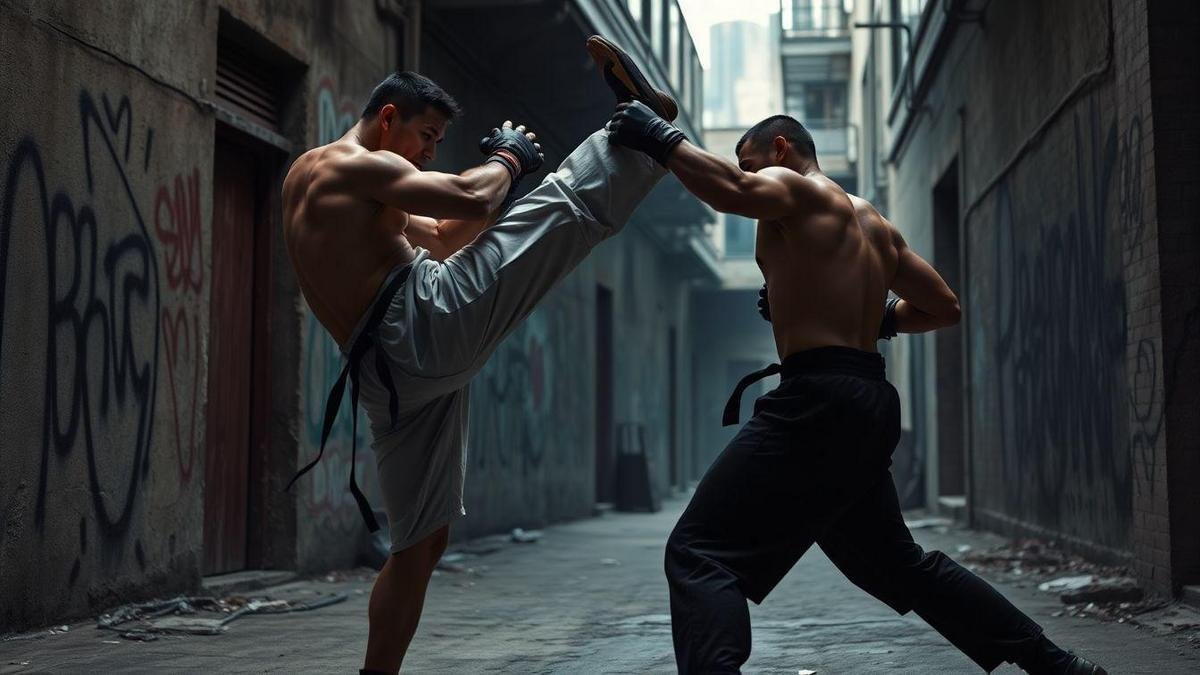
Visual Storytelling Techniques in Fight Scenes
Using Color and Shadows for Impact
When you dive into fight scenes in comics, color and shadows play a huge role in grabbing your attention. Imagine a scene where a hero is battling a villain. If the hero is surrounded by bright colors, it shows their bravery and strength. On the flip side, dark shadows can create a sense of danger or fear.
| Color | Effect |
|---|---|
| Red | Anger, intensity |
| Blue | Calm, coolness |
| Black | Fear, mystery |
| Yellow | Energy, warning |
Using these colors wisely can make your fight choreography pop! Shadows can also create depth, making the scene feel more alive. They can hide characters or reveal surprises, adding twists to the story. Think of shadows as the spice that makes your fight scenes more exciting!
The Power of Expressions in Action Panels
Facial expressions are like the window to the soul in comics. When characters are in a fight, their faces tell a story. A clenched jaw can show determination, while wide eyes can express shock. These little details make the action more real and relatable.
Here are some common expressions you might see:
- Anger: Furrowed brows, tight lips
- Fear: Wide eyes, open mouth
- Joy: Smiling, relaxed features
When you draw these expressions, you connect with your readers on a deeper level. They can feel the emotions that come with each punch and kick.
Conveying Emotion Through Visual Cues
Visual cues are your best friends in fight scenes. They help your audience understand what’s happening without needing words. For example, if a character is about to throw a punch, showing their tense muscles or a dynamic pose can convey action and excitement.
Here are some effective visual cues to consider:
- Motion Lines: Show speed and direction.
- Impact Effects: Use stars or explosions to highlight hits.
- Background Changes: A shattered wall can indicate a fierce battle.
These cues bring your fight choreography to life and make it easier for readers to follow along. They create a rhythm, guiding the eye and heart through the action.
Breaking Down Action Sequences
Steps to Analyze Fight Choreography
When diving into fight choreography comic panels analyzed, you want to take a closer look at how the action unfolds. Here’s how you can break it down:
- Identify the Characters: Who is fighting? What are their skills?
- Observe the Setting: Where does the fight take place? The environment can change everything!
- Follow the Flow: Notice how the action moves from one panel to the next. Is it smooth or choppy?
- Look for Reactions: How do characters respond to each other? Their expressions and movements tell a story.
- Examine the Techniques: What fighting styles are used? Are they realistic or exaggerated?
Key Elements in Action Sequence Breakdown
To really get into the nitty-gritty, consider these key elements that make up a thrilling action sequence:
| Element | Description |
|---|---|
| Pacing | How fast does the action happen? |
| Angles | What perspective do you see the fight from? |
| Transitions | How do panels connect? Are they seamless? |
| Impact | What does each blow feel like? |
| Emotion | What feelings does the fight evoke? |
By focusing on these aspects, you can appreciate the artistry behind the action.
Understanding Movement Flow in Comics
Movement flow is crucial in comics. It’s what keeps your eyes glued to the page. Think about how characters move from one panel to another. Are they leaping, dodging, or striking?
- Flow is Key: Great action sequences guide your eyes smoothly across the panels.
- Dynamic Angles: Angles can make a punch seem more powerful or a dodge more daring.
- Use of Space: The way characters occupy space can show tension. If they’re close, the fight feels intense!
By understanding movement flow, you can better appreciate the skill involved in fight choreography.
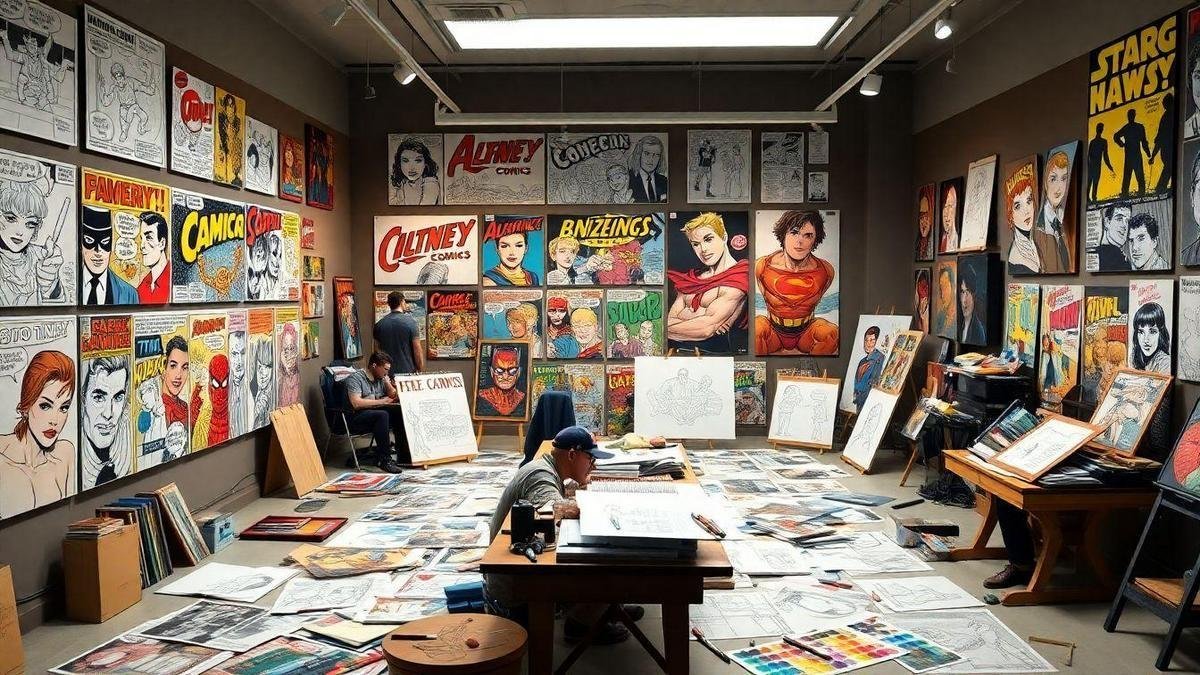
The Evolution of Comic Art Movement
How Fight Choreography Has Changed Over Time
Fight choreography in comics has seen a remarkable transformation over the years. In the early days, action scenes often felt stiff and predictable. Characters threw punches and kicks, but the flow was limited.
Fast forward to today, and you’ll find that these scenes are dynamic and engaging. Artists have started to focus on movement and energy, making every punch and kick leap off the page.
One big change is how storytelling plays a crucial role in these fight scenes. Now, it’s not just about the action; it’s about what the fight means for the characters involved. This shift has made fights more impactful and relatable.
For example, in modern comics, you might see a hero struggling with their inner demons while battling a villain. This adds layers to the fight, making it more than just a clash of fists.
Influential Artists in Comic Fight Scenes
Several artists have made a huge impact on how fight scenes are drawn in comics. Here are a few that stand out:
| Artist Name | Notable Works | Contribution to Fight Choreography |
|---|---|---|
| Jack Kirby | The Avengers, Fantastic Four | Dynamic poses and bold action lines |
| Frank Miller | Batman: The Dark Knight Returns | Gritty realism and emotional depth in fights |
| Jim Lee | X-Men, Batman: Hush | Fluid motion and cinematic angles |
| Brian Michael Bendis | Ultimate Spider-Man | Character-driven fights that resonate with readers |
These artists didn’t just draw fights; they redefined them. They brought a new level of creativity and emotion to the action, showing how a well-drawn fight can tell a story all on its own.
The Impact of Styles on Fight Choreography
Different artistic styles also play a key role in how fight choreography is perceived. For example, a cartoonish style can make fights feel light-hearted and fun, while a realistic style can convey seriousness and stakes involved. Here’s how styles affect fight scenes:
- Cartoon Style: Exaggerated movements, vibrant colors, and humor.
- Realistic Style: Detailed anatomy, shadows, and a sense of weight.
- Stylized: Unique interpretations that blend elements from various styles.
Each style brings its own flavor to the table, influencing how readers experience the action. It’s fascinating to see how these artistic choices can change the entire feel of a fight scene.
Mastering Fight Scene Composition
Tips for Creating Dynamic Fight Panels
Creating dynamic fight panels is all about making the action leap off the page. Here are some tips to help you craft those thrilling moments:
- Vary Your Angles: Use different perspectives to keep readers engaged. High angles can show vulnerability, while low angles can make characters look powerful.
- Use Motion Lines: These lines can suggest speed and direction. They help readers feel the intensity of the fight.
- Focus on Expressions: Show the emotions of your characters. Are they angry, scared, or determined? Expressions can add depth to the action.
Balancing Action and Narrative Pacing
Finding the right balance between action and story is key. Too much action can overwhelm readers, while too little can make the fight feel flat. Here’s how to find that sweet spot:
- Break Up Action with Dialogue: Use snappy dialogue to give readers a breather. It adds rhythm to the fight.
- Pacing is Everything: Speed up the action during intense moments, then slow it down for dramatic reveals. This keeps readers on their toes.
| Action Type | Pacing Tip |
|---|---|
| High-intensity fight | Quick cuts and short panels |
| Emotional moments | Wider panels with more detail |
Techniques for Kinetic Energy Depiction
To depict kinetic energy effectively, consider these techniques:
- Exaggerate Movement: Stretch limbs or twist bodies to show the force behind each hit. This makes the action feel more alive.
- Layering Panels: Overlapping panels can create a sense of chaos and urgency. It pulls readers right into the action.
Conclusion
In conclusion, fight choreography in comic panels is an art form that breathes life into the stories you love. It’s more than just characters throwing punches; it’s about emotion, movement, and the narrative woven through each action. By understanding the importance of panel layout, color, and expressions, you can appreciate the intricate dance that unfolds on the page.
So, next time you dive into a comic, keep an eye out for these elements that make the battles not just thrilling, but meaningful. Remember, every punch tells a story, and every kick carries weight.
If you’re eager to learn more about the fascinating world of comics and storytelling, don’t hesitate to explore more articles at Hero and Villain World. Happy reading!
Frequently Asked Questions
What is fight choreography in comic panels?
Fight choreography in comic panels shows how characters move and fight. It tells a story with action and emotions.
How are comic panels analyzed for fight scenes?
Comic panels are analyzed by looking at the placement of characters and their movements. This helps you understand the flow of the fight.
Why is fight choreography important in comics?
Fight choreography is important because it adds excitement. It makes the scene more dynamic and keeps you engaged.
What should I look for in fight choreography analysis?
In fight choreography analysis, look for clear action paths, character reactions, and pacing. These elements tell you how the fight feels.
Can I create my own fight choreography in comic panels?
Yes, you can! Just practice drawing movements and try to tell a story. Explore different angles to make it more interesting!
